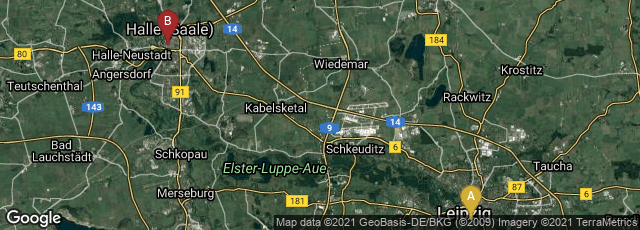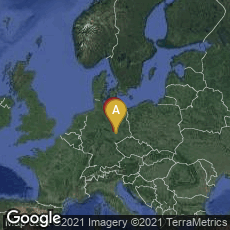

A: Mitte, Leipzig, Sachsen, Germany, B: Mitte, Halle (Saale), Sachsen-Anhalt, Germany
In 1860 German bookbinder Ludwig Brade and German civil engineer Emil Winckler issued Das Illustrirte Buchbinderbuch, in the Otto Spamer Bibliothek des Wissenswürdigsten series of volumes published in Leipzig. The first edition of this work, with 80 illustrations on 276, pages was the most comprehensive 19th century manual on mechanized bookbinding, illustrating all the available machines invented to speed up what remained a largely hand-craft process. The first edition was improved by an enlarged second edition of 1868, edited by J. R. Herzog, significantly expanded to 420 pages with 120 text illustrations. In 1882 the third edition, expanded with 150 text illustrations, was edited by Robert Metz and published in Halle by Wilhelm Knapp. With that the publishers issued at extra cost an Atlas zum Illustrirten Buchbinderbuch. Eventually the work underwent its ninth expanded edition in 1930. When I wrote this entry in December 2020 I was unaware of any equivalent work emphasizing the mechanization of book binding published in English or French during the 19th century, or any equivalent work on bookbinding, the editions of which spanned 90 years.
Most of the bindery equipment illustrated by Brade in the first three editions consisted of elaborate series of presses. The only powered machine we was a sheet folding machine powered by a steam engine. The authors also illustrated some elaborate manual folding machines.
Except for machines that inserted wire staples (so-called wire stitches), the third edition Brade's manual did not describe the mechanization of sewing, as no satisfactory thread sewing machine for bookbinding was invented until that of the American, David Smyth, which did not go into general production until 1886.
By the fourth edition (1904) the editors illustrated a thread-sewing machine built by Gebr. Brehmer in Leipzig. Several of the other pieces of machinery included steam-powered stamping machines to speed up stamped designs onto covers before the book block was cased in. In the fourth edition the editors included reproductions of binding examples and actual mounted samples of marbled paper. At the back of the book there were also a few advertisements for equipment, supplies, and machines.
Conveniently, the 6th edition of Brade's book (1916) by Hans Bauer-Gera and Paul Kersten was digitized and available the Hathi Trust. As I scanned that I did not notice much difference in the content between that and the 1904 4th edition. Two of the pressing machines for pressing or printing designs onto covers appeared to be more elaborate.